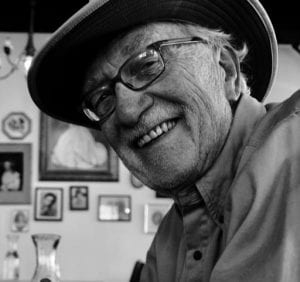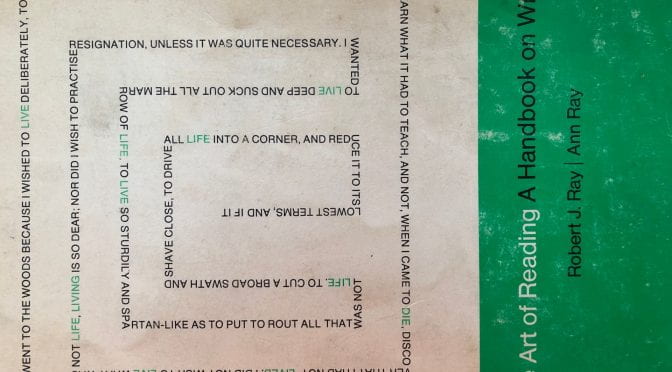Ever thanked an author? I did once. I looked up the guy who wrote my college comp textbook.

Somehow I found Robert Ray’s number and reached him at home. He had been wrapping up his teaching career and concentrating on his writing — mysteries, mostly. Typical for him, he was also writing books on how to write books. The Weekend Novelist series, he calls them.
How, I asked him, did this textbook, The Art of Reading: A Handbook on Writing, come to be? The idea came at a party:
I had been teaching an advanced exposition class at Beloit College in Wisconsin. I used that class to field test my ideas about reading and writing, and I came up with exercises to use in the class. The exercises turned into a book. I was talking about it to a classics professor at a cocktail party one night, and he happened to be an acquisitions editor at Blaisdell Publishing.
It’s long been out of print. If you want a copy, it’ll cost you $144.89 on Amazon. Check out the book’s page there: I wrote the only customer review. Well, besides “Tyler,” whose entire review is “Great Book.” Is that gratitude, Tyler?
The book — and the college freshman course I read it in — changed my approach to writing. Instead of inventing my own style, why not imitate the pros’ prose? Ray wanted me to read a few of them a little at a time and slowly. Here’s what he told me on the phone about the book’s approach:
Using colored ballpoints, the reader circles words. If you’re reading for structure, you circle words that repeat. If you’re reading for content, you circle nouns and verbs. Nouns in red, say, and verbs in blue. When you draw connecting lines, the patterns jump out at you. Seeing the patterns takes you into the style and mind-set of the writer. I still circle words.
I do, too. I did so much circling and web-making in college comp that my writing started to take on the style of William Faulkner — long, meandering streams of sentences banked by shoals of subordinate phrases and clauses.

Ray, like me, was grateful for another writing instructor — Natalie Goldberg, whose Writing Down the Bones is a mixture of Zen living and fast writing. Ray called Goldberg “the guru of timed writing.” Here’s how he described her approach:
It’s so simple. Set the timer. Write until it beeps. Read your writing aloud. Set your timer, write until it beeps. The timer distracts the left brain editor-critic-judge. You zone out on the writing.
So Ray still imitates from slow reading, but that’s for revisions. To get the words on the page in the first place, he writes fast.
I haven’t thanked many of my teachers years down the road. I should, but I haven’t. But I find I thank my mentors.

I wonder how much of what you get out of Mr. Ray’s book applies also to invention. Every time I find a connection worth noting in a book’s margin, I have a realization or make a comparison that helps me argue something I’m interested in. The question is, who (besides me) cares? If there’s no audience for my issue, do I need to invent one out of those surrounding me? Or do I just need to pack up and move in search of one?